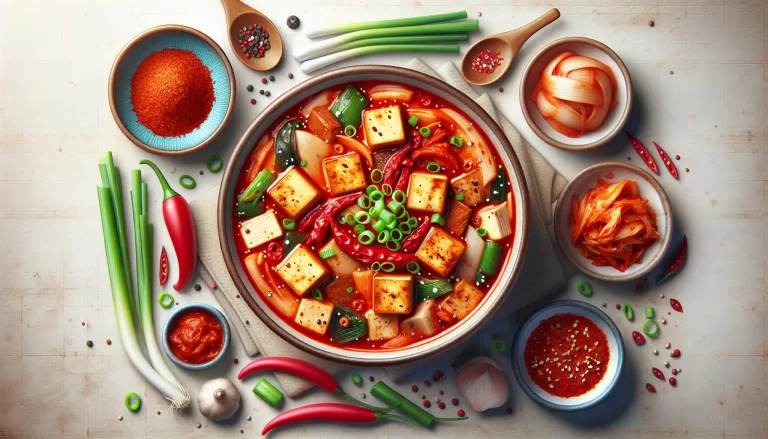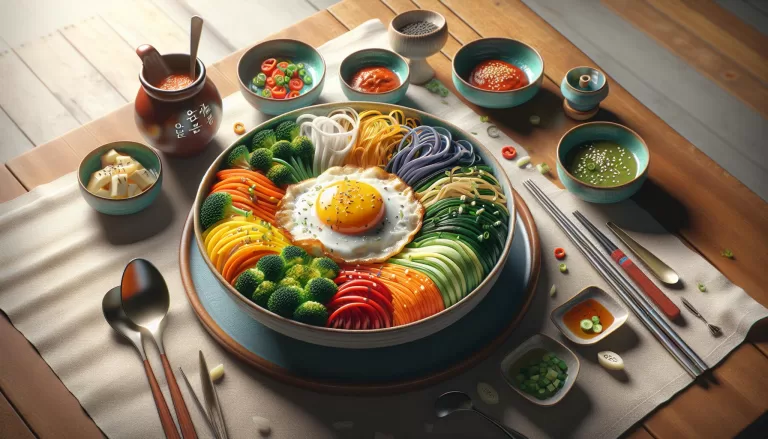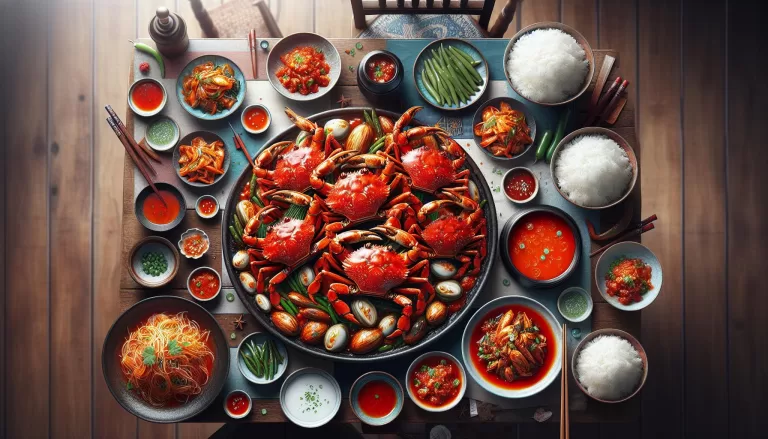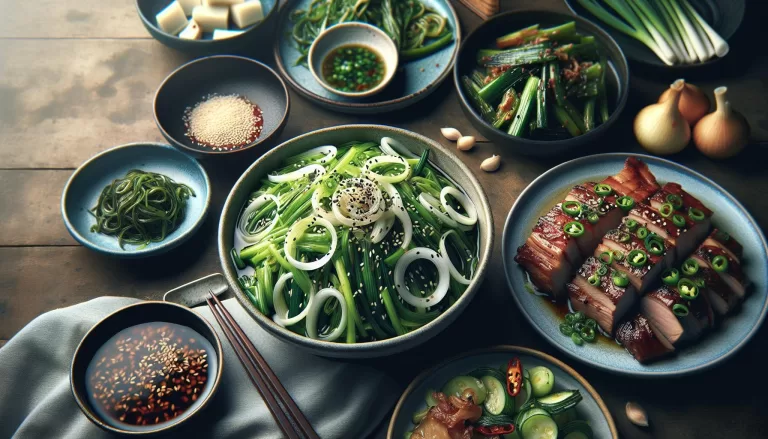Easy Homemade Nokdujeon Recipe – Savory Mung Bean Pancakes for a Healthy Meal
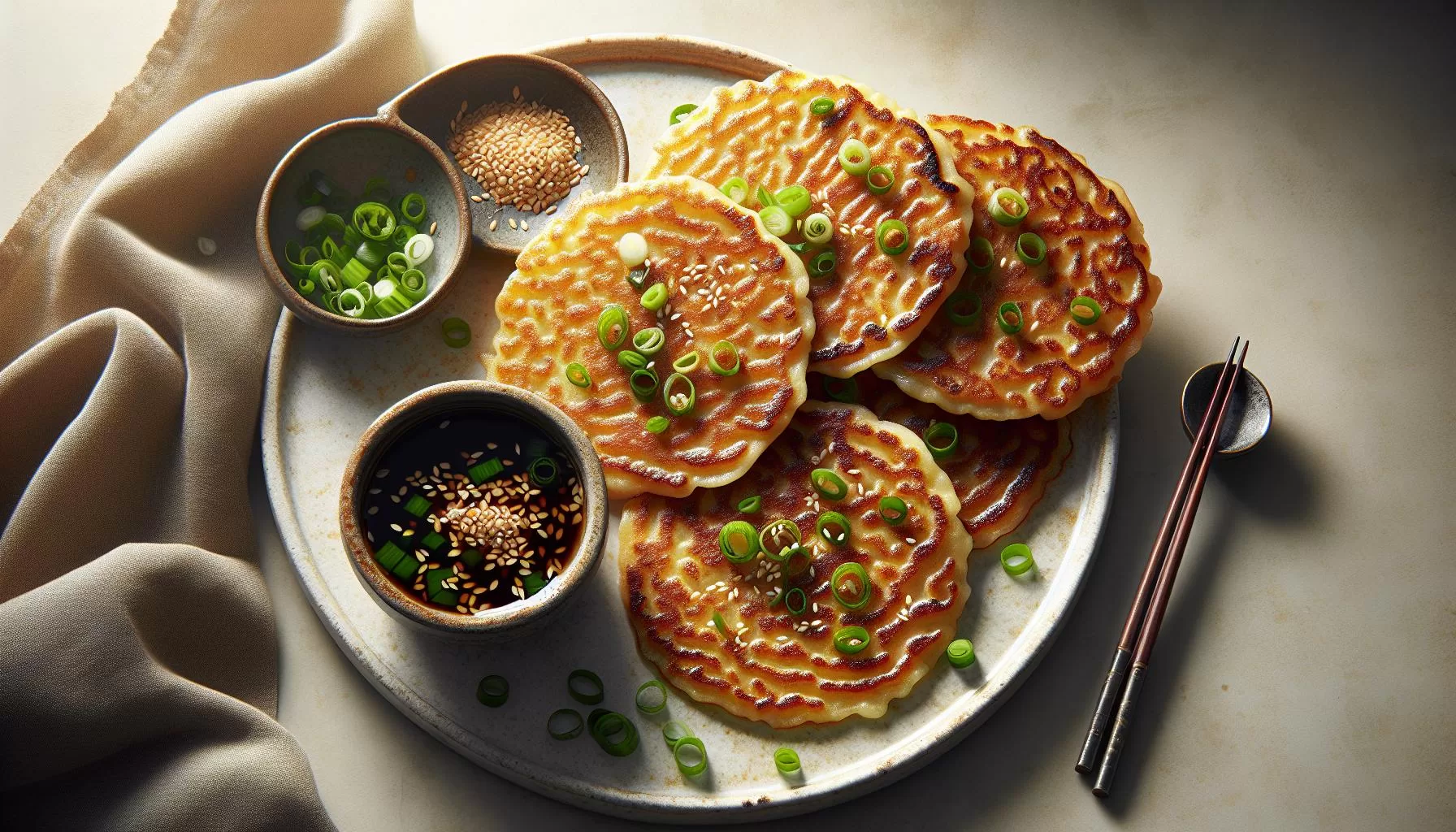
Understanding Nokdujeon
Ah, you’ve come so far in your journey. Now let’s take a deeper dive into Nokdujeon. This classic Korean dish, crafted from ground mung beans and other tantalizing ingredients, is often hailed as a ‘delight to cook’ and ‘joy to savor’. It gets the spotlight at feasts, festivals, and family dinners alike.
In its best form, Nokdujeon comprises a crunchy exterior and soft interior, with ample and evenly distributed toppings. As soon as these pancakes hit the pan, their aroma will radiate across your kitchen, teasing your palate. That’s the power of Nokdujeon!
With an understanding of ingredients, ratios, and methods, you’ll whip up your Nokdujeon in a jiffy. But don’t fret! We’ve got you covered. We’ll later delve into a wide array of tips and tweaks for creating an unforgettable batch of these pancakes.
Folks from all walks of life love Nokdujeon, given their nutritional makeup. As a rich source of protein, these mung bean pancakes provide a power-packed punch. They’re also full of fiber, keeping you satiated for longer periods.
| Nutrient | Serving (3 pancakes) |
|---|---|
| Calories | 350Kcal |
| Protein | 20g |
| Carbohydrate | 45g |
| Fat | 12g |
| Fiber | 8g |
Whether you’re a foodie seeking out novel delicacies, a home cook expanding your recipe catalogue, or someone who simply wants to enjoy a wholesome meal, diving into the world of Nokdujeon won’t disappoint you.
Ingredients for Nokdujeon

Crafting an authentic nokdujeon dish begins with gathering the right ingredients. First and foremost, you’ll need 1 cup of dried, peeled mung beans. Ensuring the mung beans are peeled is important, as it’s the key factor that opens the door to a smooth, fluffy texture for your pancakes.
Next up are 2 cups of water. This will be used for soaking the mung beans overnight. This hydration is crucial as it softens the beans and primes them for grinding into a rich, thick batter.
While mung beans are indisputably the heart of nokdujeon, the soul lies in its accompanying ingredients. Without their contribution, the pancakes would lack the depth and complexity that they’re renowned for.
For the aromatic base, you’ll need 1/2 cup of finely chopped green onions and 2 cloves of minced garlic. They infuse the pancakes with their distinctive flavors and lift the taste profile to new heights. In addition, have 1/2 a zucchini thinly sliced or grated ready for a burst of freshness that cuts through the richness.
Then, ensuring a memorable hit of umami, have on hand 200 grams of finely chopped kimchi. This quintessentially Korean ingredient isn’t traditionally a part of all nokdujeon recipes, but once you’ve tried it, you’ll wonder how you ever went without it.
As for proteins, stock up on 100 grams of thinly sliced pork belly. It’s popularly used in Korea due to its juicy, succulent texture and rich savory notes that compliment the pancakes beautifully.
Finally, to bring all components together, 1/2 teaspoon of salt and a dash of white pepper powder will provide a harmonious balance.
Here’s a brief rundown of what’s needed:
| Ingredient | Quantity |
|---|---|
| Mung Beans (dried, peeled) | 1 Cup |
| Water | 2 Cups |
| Green Onions (finely chopped) | 1/2 Cup |
| Garlic (minced) | 2 Cloves |
| Zucchini (thinly sliced or grated) | 1/2 |
| Kimchi (finely chopped) | 200 grams |
| Pork Belly (thinly sliced) | 100 grams |
| Salt | 1/2 Teaspoon |
| Pepper | Dash |
Step-by-Step Cooking Instructions

After gathering your ingredients, it’s time to dive into the cooking process of authentic Korean Nokdujeon pancakes. While these steps might seem involved, you’ll be savouring fantastic pancakes in no time. Trust me, the final result is worth the effort!
Start by soaking the peeled mung beans in cold water for at least 3 hours. This rehydrates the beans and makes them easier to grind. Though it’s somewhat time-consuming, it’s a crucial step, so don’t skip it. Once soaked, drain the beans and process in a grinder with a minimal amount of water. You should aim for a batter-like consistency. Don’t hesitate to add a bit more water if needed.
Proceed to add finely chopped green onions, minced garlic and crystalline salt to the batter. This injects an incredible depth of flavor to your pancake batter.
For those seeking to twist the traditional recipe, consider using chopped kimchi and diced pork belly. Both are optional, but they provide an interesting kick to the taste, particularly if you’re into spice and meaty flavors.
Zucchini is a terrific addition as well. Apart from enhancing the flavor profile, it brings a significant amount of nutrition. A single cup of zucchini boasts 20% of the recommended daily dose of Vitamin C and contains just 20 calories. So your Nokdujeon pancakes aren’t just delicious, they’re also nutritious!
Once your batter is ready, heat up a non-stick pan with some oil spread evenly. Add spoonfuls of the batter and flatten lightly. Cook until both sides achieve a golden brown color.
For an ultimate culinary experience, serve these delectable pancakes with a traditional Korean dip sauce. The balance is perfect – the crispy, savory pancake paired with the tangy dip – simply a match made in heaven!
Tips and Tricks for the Perfect Nokdujeon

For a homemade Nokdujeon treat that’s truly memorable, take note of these tips and tricks. You’re not just creating a meal, you’re creating an experience.
Perfect Soaking Time for Mung Beans
Remember, the success of your Nokdujeon lies in perfectly soaked mung beans. Make sure to soak peeled mung beans for at least two hours. Overnight soaking delivers even better results.
Flavor Enhancements
Thinking about variations on the traditional Nokdujeon recipe? Alterations can be a joy to explore. Consider adding thinly sliced shiitake mushrooms. They can offer an earthy flavor that complements the base ingredients beautifully.
Ever think about adding gochugaru or Korean chili powder? It’ll provide a fiery kick that can be quite enjoyable. But keep in mind, it’s not for folks with a low spice tolerance!
Cooking Techniques
Don’t discount the importance of using a non-stick pan in achieving the perfect golden-brown color. It’s also key to regulate the heat while cooking. Medium heat tends to be just right ensuring your pancakes are evenly cooked without burning.
Serving Suggestions
Don’t just serve the pancakes. Elevate your presentation by pairing them with a traditional Korean dipping sauce. Go the extra mile and garnish with sliced green onions or sesame seeds. It adds color and seals the deal on your authentic Korean culinary adventure.
The nutritional value of your homemade Nokdujeon pancakes is also worth thinking about. They offer a high source of good proteins and fiber, especially if you opt to include zucchini. A useful table illustrating their nutritional value is as follows:
| Nutrient | Amount per Pancake |
|---|---|
| Calories | 150 |
| Carbs | 25 g |
| Protein | 5 g |
| Fat | 3 g |
Remember, food is an art. Enjoy the process of cooking as much as the result on the plate. With practice and creativity, your Nokdujeon pancakes can easily become a star dish in your cooking repertoire.
Serving and Enjoying Your Homemade Nokdujeon

Now that you’ve mastered the cooking part, it’s time to focus on the finishing touches that will make your nokdujeon pancakes truly unique.
A key part of enjoying these savory mung bean pancakes lies in the right accompaniments. Nokdujeon pairs beautifully with a traditional Korean dipping sauce. This usually consists of soy sauce, vinegar, water, and a spicy kick from Korean chili powder. If you’re up for some experimentation, give it a twist with other ingredients like sesame oil or freshly chopped herbs. Remember, the goal here is to perfectly balance the nutty taste of mung bean with the sauce.
Garnishing also plays an essential role in finalizing your dish. Green onions, sesame seeds, or even a sprinkle of seaweed can take your nokdujeon to a whole new level. The crunch from these garnishes complements the soft pancakes, offering a unique texture and flavor contrast. Plus, they add a beautiful pop of color to your presentation- it’s always a good idea to please the eye before the palate, right?
If you’re mindful about nutrition, rest assured that homemade nokdujeon has got your back. These protein-packed pancakes are a healthy alternative to many fast-food options. To break it down, here is the nutritional value of each pancake:
| Values | Per Nokdujeon Pancake |
|---|---|
| Calories | 120 |
| Carbs | 12g |
| Protein | 6g |
| Fats | 5g |
But remember, the most crucial part of making your nokdujeon is to enjoy the process. It isn’t so much about the end product, but the joy you derive from creating something so delicious from simple ingredients. Soak up the incredible scent wafting through your kitchen as you cook, appreciate the golden-brown hue of the pancakes, and most importantly, savor every bite of your homemade nokdujeon. Let the flavors whirl a dance in your mouth as you delve into this delightful dish. This isn’t just a meal, it’s an earthly experience to engage all your senses.
Conclusion
You’ve now mastered the art of making homemade Nokdujeon, a savory mung bean pancake. You’ve learned how to enhance the flavor with the right dipping sauce and experiment with ingredients like sesame oil or herbs. You’ve also discovered how garnishing with green onions, sesame seeds, or seaweed can add texture and color to your dish. Remember, each pancake you craft is not just delicious but also packed with protein and health benefits. So, don’t just cook these pancakes, savor the entire experience – the process of creating, the aroma wafting through your kitchen, and of course, the pleasure of indulging. Happy cooking!
